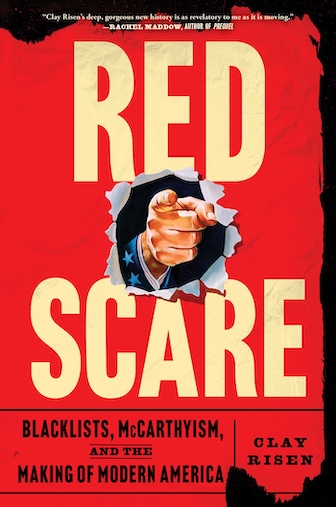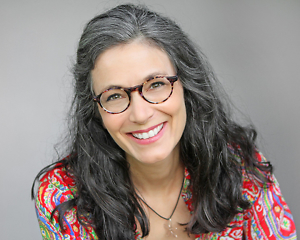The Book Lady of Sevier County
Dolly Parton talks with Chapter 16 about why she gives books to hundreds of thousands of children
Even if you have no clue who won what at the CMA Awards—and even if you don’t know what CMA stands for—you probably know a thing or three about Dolly Parton. The sartorial spectacles, the pyrotechnics of her blonde coiffure, the bodacious figure. The urgent, pleading chorus of “Jolene,” and the jaunty “9 to 5.” The forty-one Top Ten country albums and the twenty-five number-one singles. Parton is almost universally adored, not just for her songs but for her sunny, shiny, sweeter-than-sweet-tea persona, her gusto, and her wit. It’s virtually impossible to name another member of Music City royalty who can claim a following of such diversity.
But even Parton’s biggest fans may be unaware of her less flashy role as “The Book Lady”—a nearly magical figure who leaves books in the mailboxes of boys and girls everywhere. At least that’s the way some children have come to think of Dolly, thanks to her groundbreaking program, the Imagination Library, which distributes free books, one per month, to children from birth to age five in more than a thousand communities across the country. The books vary from year to year, but there are a number of staples, including The Little Engine That Could, a classic that’s become an iconic title for the program. Enroll a child in the Imagination Library at birth, and she’ll have a collection of sixty books by the start of kindergarten.
Founded in 1997, the Imagination Library is a generous and potentially life-altering gift to low-income children who, research has shown, are often read to less often than children from higher-income families—a disparity that puts them at a disadvantage in school from day one. But, at Parton’s insistence, it is not a program strictly for poor kids. Partly to avoid the stigma that can be attached to programs that serve the needy, the Imagination Library is set up to enroll any child in a participating community, regardless of family income.
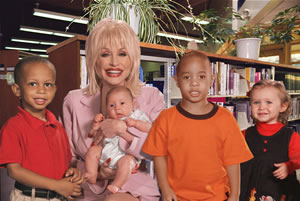 Parton may be as famous for hardscrabble upbringing as for her musical career: born and raised in a rustic cabin in Sevier County, Tennessee, she was the fourth of twelve siblings. Just as her songs have drawn on her humble Smoky Mountain roots, the inspiration for the Imagination Library arose from what Dolly observed as a child. Her father, and many of her adult relatives, could not read. “I saw what a hindrance it was because their minds were just brilliant,” she told Chapter 16’s Margaret Renkl in a 2001 interview. “And I’ve often wondered what my dad might have been able to do had he been able to read. He just was so smart in so many ways.”
Parton may be as famous for hardscrabble upbringing as for her musical career: born and raised in a rustic cabin in Sevier County, Tennessee, she was the fourth of twelve siblings. Just as her songs have drawn on her humble Smoky Mountain roots, the inspiration for the Imagination Library arose from what Dolly observed as a child. Her father, and many of her adult relatives, could not read. “I saw what a hindrance it was because their minds were just brilliant,” she told Chapter 16’s Margaret Renkl in a 2001 interview. “And I’ve often wondered what my dad might have been able to do had he been able to read. He just was so smart in so many ways.”
Parton never took the joy of reading for granted. She has credited the fairy tales she devoured as a kid, in part, for her drive to leave Appalachia and pursue her musical ambition. Those books gave her access to worlds beyond her rustic mountain hamlet; they helped her to dream—and dream big—without fear: “The only thing I ever saw growing up was poor people in overalls and brogan shoes and ragged clothes. But in my books I would read about kings and queens with their velvet clothes and big diamond rings. That’s how I knew there was a world outside the Smoky Mountains. And because I felt comfortable in those stories, I knew it would be OK for me to go out in that world. My books kept me from being afraid.” Sending books straight into children’s homes free of charge, she realized, could act as a catalyst for their imaginations much the way books had done for her.
Fittingly, Parton launched the Imagination Library small-scale and close to home, sending books to Sevier County children, who dubbed her “the Book Lady.” The program began expanding to other communities in 2001: partner communities provide funding, and the Imagination Library provides infrastructure. In 2004 Governor Phil Bredesen began the process (now complete) of making it available to children statewide in Tennessee. In recent years, its growth has been exponential: today, children in 47 states, as well as the United Kingdom and Canada, receive books from the Imagination Library—nearly 600,000 children each month.
Every year, a selection committee of reading experts and teachers meets to review the Library’s titles and adopt ten to twenty new ones, ensuring that a child won’t receive repeats of those already sent to older siblings in the family, and that the offerings are age-appropriate and in keeping with themes established by the Library: “love of reading and learning; regard for diversity of people, their roles, culture, and environment; promotion of self-esteem and confidence, appreciation of art and aesthetics.”
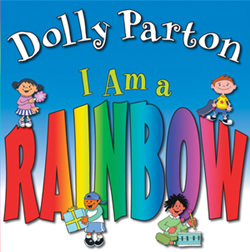 Recently, Parton’s own debut children’s book, I Am a Rainbow (2009), joined the ranks. “It’s sweet, and it offers a good piece of advice for anyone: the best days are inside you,” says parent and Middle Tennessee State University English professor John Minichillo, whose son Giacomo belongs to the program. “The book itself is honest about a child’s emotions, with the message that our moods change and that’s who we are.”
Recently, Parton’s own debut children’s book, I Am a Rainbow (2009), joined the ranks. “It’s sweet, and it offers a good piece of advice for anyone: the best days are inside you,” says parent and Middle Tennessee State University English professor John Minichillo, whose son Giacomo belongs to the program. “The book itself is honest about a child’s emotions, with the message that our moods change and that’s who we are.”
Nashvillian Diane Mosley appreciates how the Library has exposed her twin daughters to books they otherwise might have missed. “With two girls, it was nice to receive books not aimed just at little girls,” she says. “And many of the books we received made us seek out other titles from those authors, as well as advanced books from familiar authors, like Jane Yolen and Peggy Rathmann.”
Pleased parents are probably one of the main reasons the program has come so far so fast. The Imagination Library, they’ve found, is a concept that works: parents do read to their kids more when new books show up in the mailbox once a month. Not surprisingly, they’re eager to spread the word to other families (and moms-to-be) about the literary goldmine that can be theirs.
Research supports the program’s effectiveness: a 2007 study sponsored by the Tennessee Board of Regents found that pre-K and kindergarteners who receive the Imagination Library books fare better on key learning attributes than kids who haven’t received the books. And a new study from the University of Tennessee in Knoxville suggests the tremendous long-term impact the Imagination Library may have: in a paper published in the journal Reading Psychology, Richard Allington, professor of education at UT, showed that simply giving disadvantaged children free books is more effective in boosting reading scores than three months of summer school.
Parton recently spoke with Chapter 16 about the role books played in her childhood, her hopes for the Imagination Library’s future, and more.
Chapter 16: Growing up, what was your exposure to storytelling? To books?
Parton: Well, first thing is we really didn’t have any books in our home—too many kids and not enough money or space. So storytelling just came with the territory. All of my relatives seemed to have that gift, but most of the time it came out in song. The one book we did have was the Bible, and some of my fondest memories were the times Momma would read me those wonderful stories.
Chapter 16: Was there a special teacher, or family member, who inspired you to love reading?
Parton: I don’t ever remember learning to read—I just always remember reading. As I said, my Momma reading to me got my imagination working, but it all just came to me natural and easy.
Chapter 16: How did you come by reading material when you were a child?
Parton: We just didn’t have much at home. I do remember the Sears catalogue, but it always had a bunch of pages ripped from it. We used to tear out a page which showed something we really wanted ‘cause if we couldn’t have it, at least we could look at the picture.
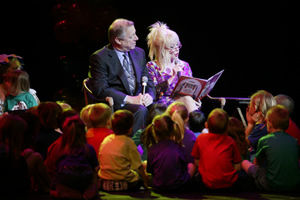 Chapter 16: Which writers do you most enjoy reading these days?
Chapter 16: Which writers do you most enjoy reading these days?
Parton: Earlier this year I read all of Diana Gabaldon’s Outlander series—I loved them all. Now I am returning to the classics and just having a ball reading them.
Chapter 16: What are some of your favorite titles in the Imagination Library?
Parton: Of course, The Little Engine that Could is my favorite—it’s really the symbol for the Imagination Library. The message is timeless and I always like to think of myself as The Little Engine that Did!
Chapter 16: Do you ever hear from children whose lives you’ve touched through the Imagination Library?
Parton: All of the time. I get the sweetest notes, pictures, and e-mails. We just gave away our 25,000,000th book at Dollywood to a little boy from Birmingham. Kumar is his name and he is the cutest little boy you ever saw. Just being with him and his family was a great thrill… and reminded me why we do what we do.
Chapter 16: Imagination Library books go out to all kids, regardless of need. Why not focus on children who don’t already have books in their homes?
Parton: I have always felt we shouldn’t leave anybody out or single anybody out. Besides, it would probably cost more money to decide who needed it than it does just to give everyone a book.
Chapter 16: If children outside the South want to understand and experience the world you grew up in—that of the Smoky Mountains—what books would you encourage them to read?
Parton: My autobiography! There are so many great books about the South. Just start with any one you can find, and it will lead you to the next one … and the next one … and the next one.
Chapter 16: Did you believe from the beginning that the Imagination Library would grow to the size it is today? What are your hopes and dreams for its future?
Parton: Really and truly, I had no idea this would get so big. The main reason it has been so successful is all of the local sponsors who have made my dream their own. I get too much credit for all that has happened, so it’s important to me that everyone understand this has been a journey of a thousand people. As for the future, who knows? Now anything seems possible—every child in the U.S., Canada, and the UK—more countries, more books, and most of all more smiles on kids’ faces! I love it.
For more information about the Imagination Library, or to enroll a child, please click here.

